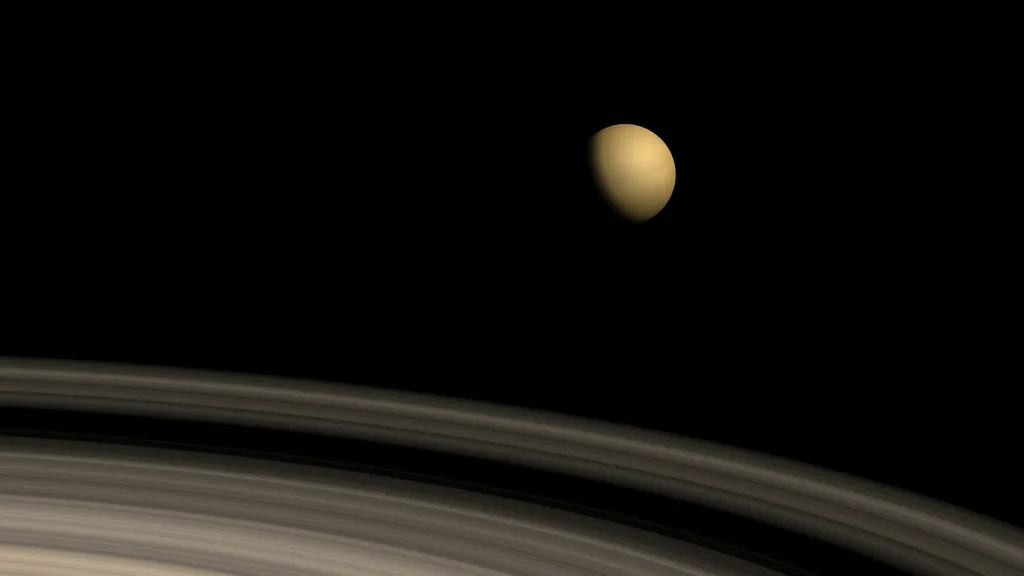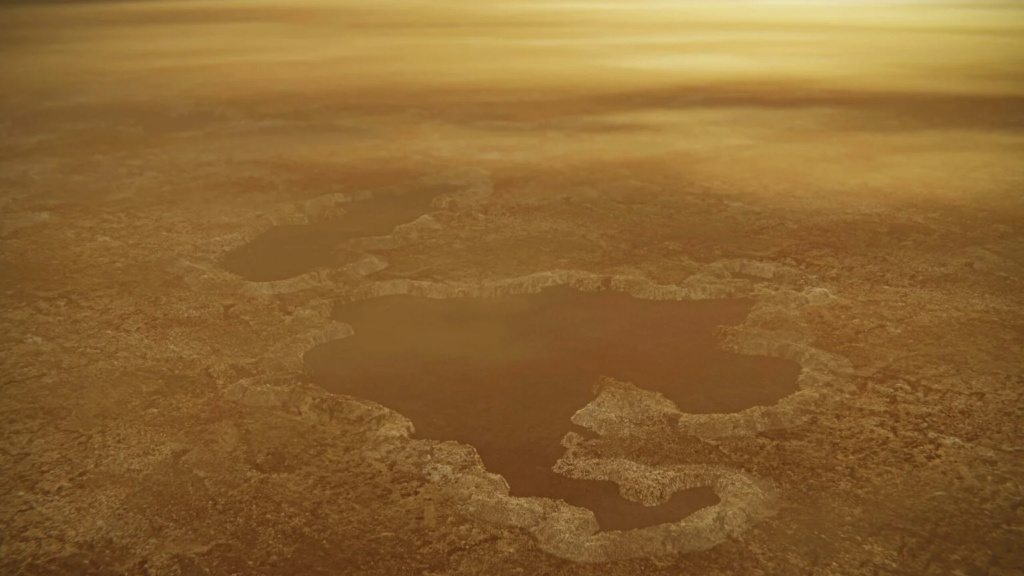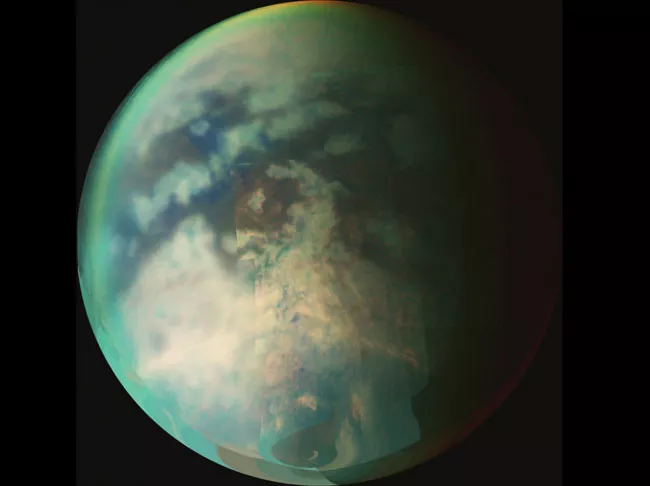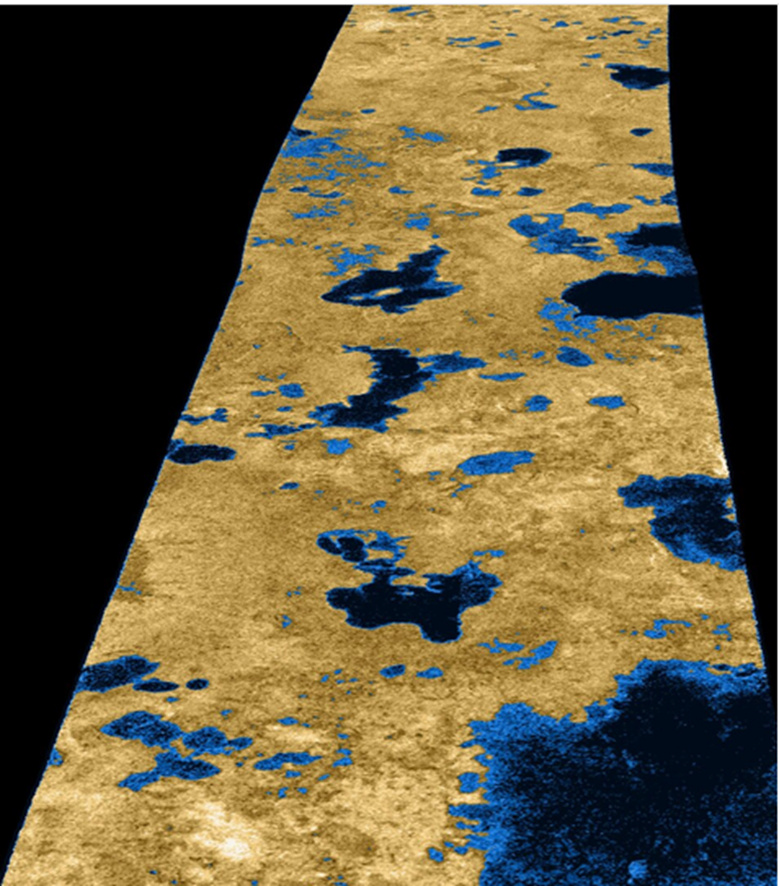Life on Titan would be very, very strange

The Rings of Saturn and Titan
A life that, if it exists, would demonstrate a second genesis, a second origin, and would suggest that life could easily develop throughout the universe.
Titan looks just like Earth. It has a thick atmosphere made of nitrogen. Seasonal storms cause visible spots in orbit. It has lakes. In fact, Titan is the only place in the solar system except Earth to have stable liquids on its surface. These liquids flow as rivers and streams, accumulate as lakes and seas, sculpt coastlines and surround islands, just as they do on Earth.
But it's not water that flows on Titan. This moon is saturated with hydrocarbons. Methane and ethane, both gaseous substances on Earth, are liquid on Titan's frigid surface. Temperatures hover around -179°C. It's so cold that the water ice is hard as rock; and the rocks seen strewn across its surface are actually solid water. It's all over Titan, but it's stuck in a state that makes it unavailable to all sorts of chemical reactions essential to life.
Ask an exobiologist what the chances are of finding life on Titan. He will tell you that this small orange moon covered in fog is the best place to go if it's a weird life form you want to find.
A life completely different from what we know on Earth. A life that, instead of being water-based, uses liquid and thick hydrocarbons as solvents. A life that, if it exists, would demonstrate a second genesis, a second origin, and would suggest that life could easily develop throughout the universe.
?A LIFE WORTH SEEKING
"We'll never know if liquid water is the only solvent necessary for the formation and propagation of life until we collect samples from these damned lakes and seas," planetary scientist Jonathan Lunine said recently. Cornell University during an astrobiology conference. Luna has spent years studying Titan. He even designed with his colleagues a ship capable of landing there and floating on one of its seas of hydrocarbons. Pondering the possibility of life on Titan is nothing new.

In the 1970s, Carl Sagan and chemist Bishun Khare, then at Cornell University, were already publishing papers describing the organic chemistry that might be in place on Saturn's moon. At that time, large liquid expanses on the surface of the moon had not yet been spotted. Therefore, Sagan and Khare were thinking about the kinds of reactions that could occur in the moon's atmosphere (in 1982, Sagan and Stanley Dermott suggested the existence of such lakes). Later, Sagan and Khare proved that it was possible to form amino acids from the elements found in moon mist.
In the 1990s, thanks to the Hubble Space Telescope, it was realized that Titan could be a star covered with liquid, but it was not until NASA's Cassini mission that scientists were able to observe it well. In 2004 the spacecraft began to break through Titan's cloud cover, and in 2005 Cassini parachuted the Huygens probe through the fog to reach Titan's equator.
The data sent back to Earth revealed a world very similar to our own, but with an entirely different chemical makeup.

SPECULATIONS AND EXPECTATIONS
“Think of life on Earth: either we live in water or we are elaborate bags of water,” explains exobiologist Kevin Hand of the Jet Propulsion Laboratory. “On Titan, life in the lakes would take the form of 'bags' of liquid methane and/or ethane. This 90 [Kelvin] liquid would be the solvent, and whatever dissolves in these lakes would be the building material for the other components necessary for life and metabolism. »
However, it is not easy to fuel a metabolism in such temperatures, and this is one of the reasons why scientists are reluctant to send a probe to Titan. However, exobiologists are currently studying the reactions and pathways that life could follow to develop on Titan. In particular, they study aspects such as breathing hydrogen and feeding on acetylene.
"Even to the eyes of a human being, Saturn would be a fuzzy, faintly shining shape in the night fog," says Jonathan Lunine. "But with vision extending a little further than a human's, at the nearest level on the infrared scale, the star and its rings could be clearly observed floating surreal in the skies of Titan. »
Large expanses of liquids over the northern hemisphere of Titan, mapped by Cassini in 2006.
?WHAT DO WE KNOW ABOUT TITAN'S SEABED
It turns out that we know quite a bit about Titan's coastline, and barely less about its seabed. Until then, scientists had mainly imagined the seabed from the characteristics of the coast and the topography of the surroundings. But in May 2013, the Cassini probe aimed its radar at the bottom of Ligeia Mare, the second deepest sea on Titan. Using radar data, the team mapped the seabed, its bathymetry, and was able to observe that Ligeia descended to a depth of 160 meters. The seabed in the northern sea is smoother than in the south, which is dotted with flooded valleys and steep peaks.
Scientists were able to estimate the amount of liquid hydrocarbons present in Ligeia Mare. At least 100 times more than the reserves of oil and gas on the whole of the Earth.

Next step ? Dive into the depths of Kraken Mare, which covers an area of at least 400,000 square kilometres, roughly the size of Germany. "Kraken appears to be made up of no less than three separate pools, each about the size of Ligeia Mare," Lunine said. “So there are a lot of seas to observe on Titan. »
Source: websites

